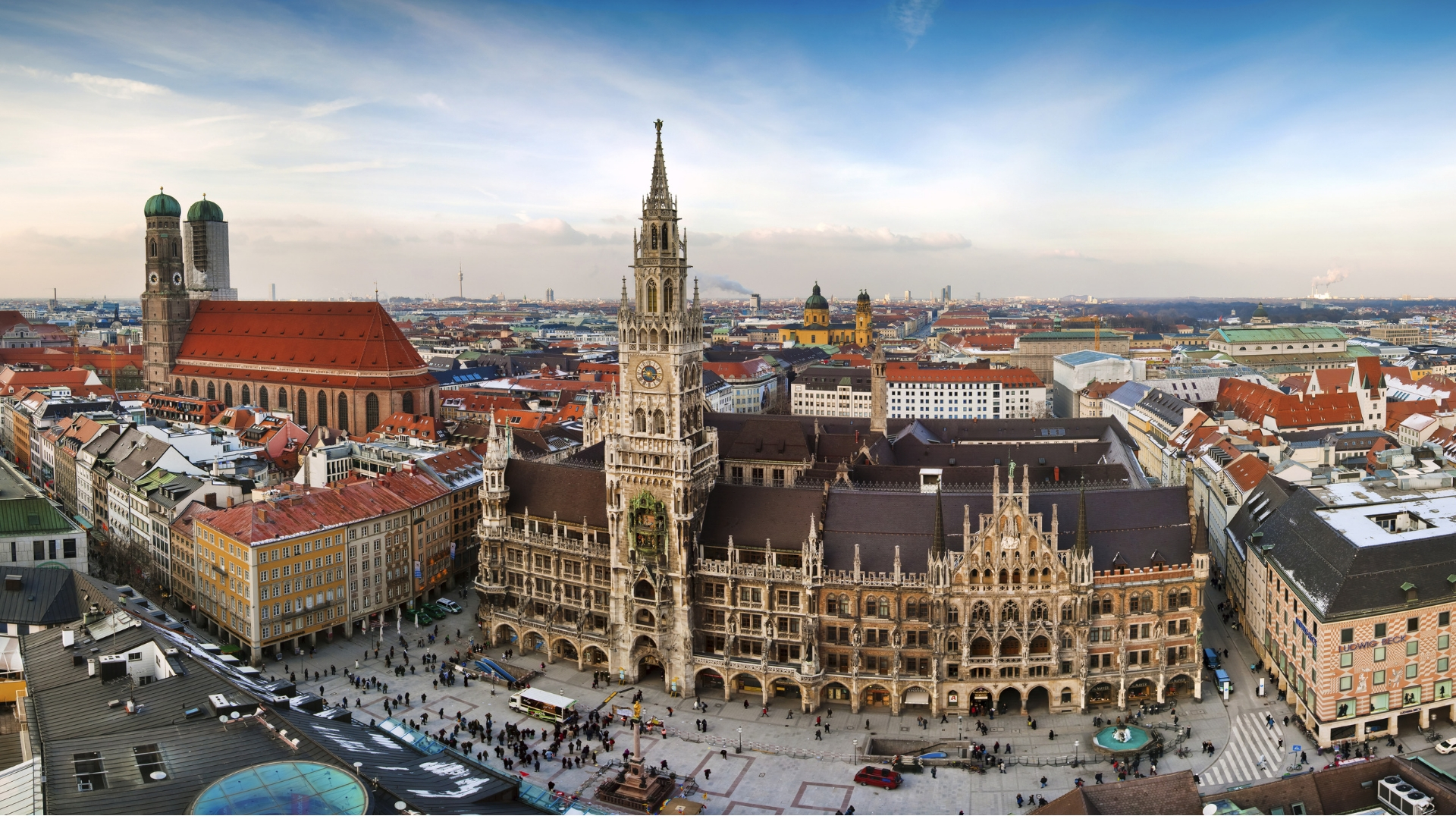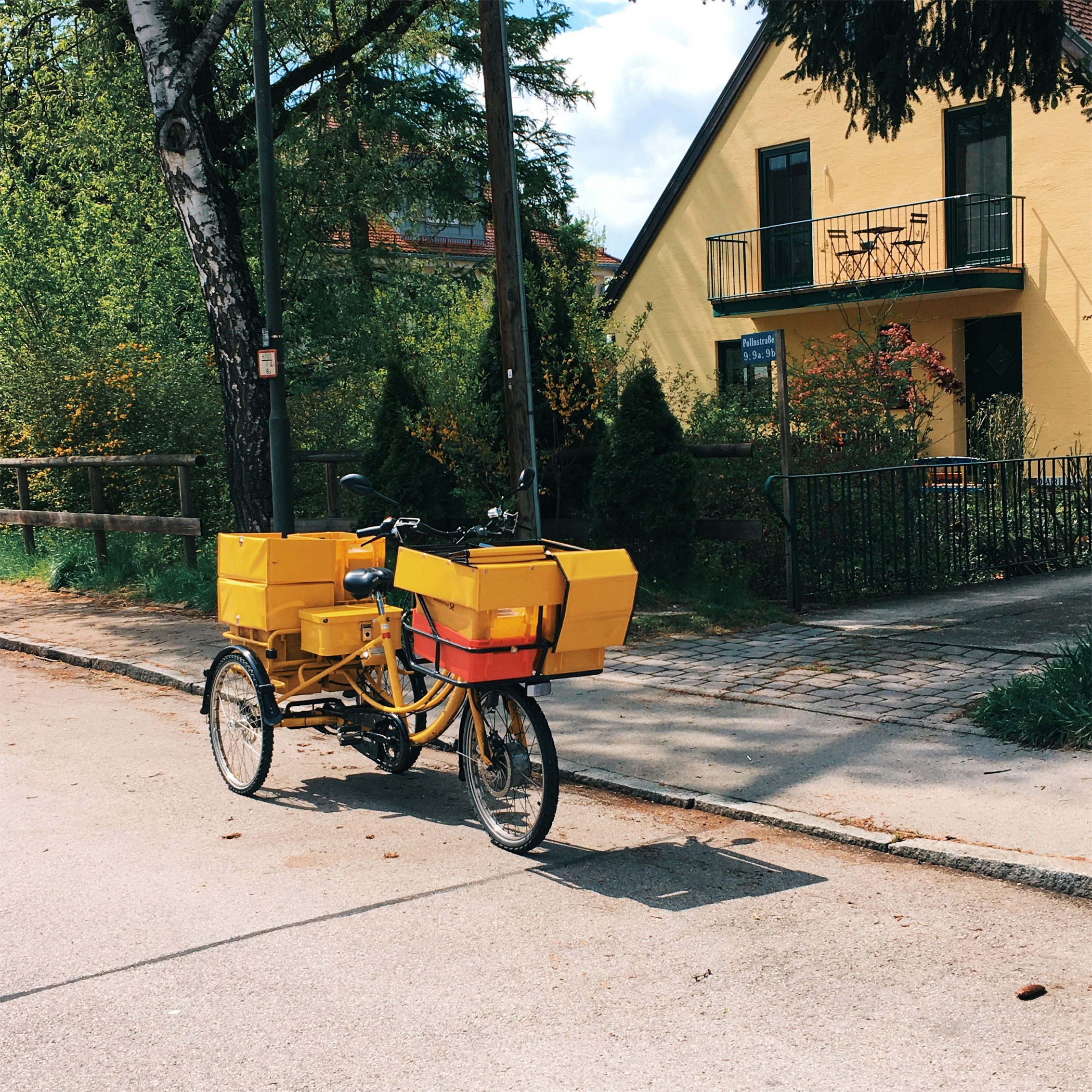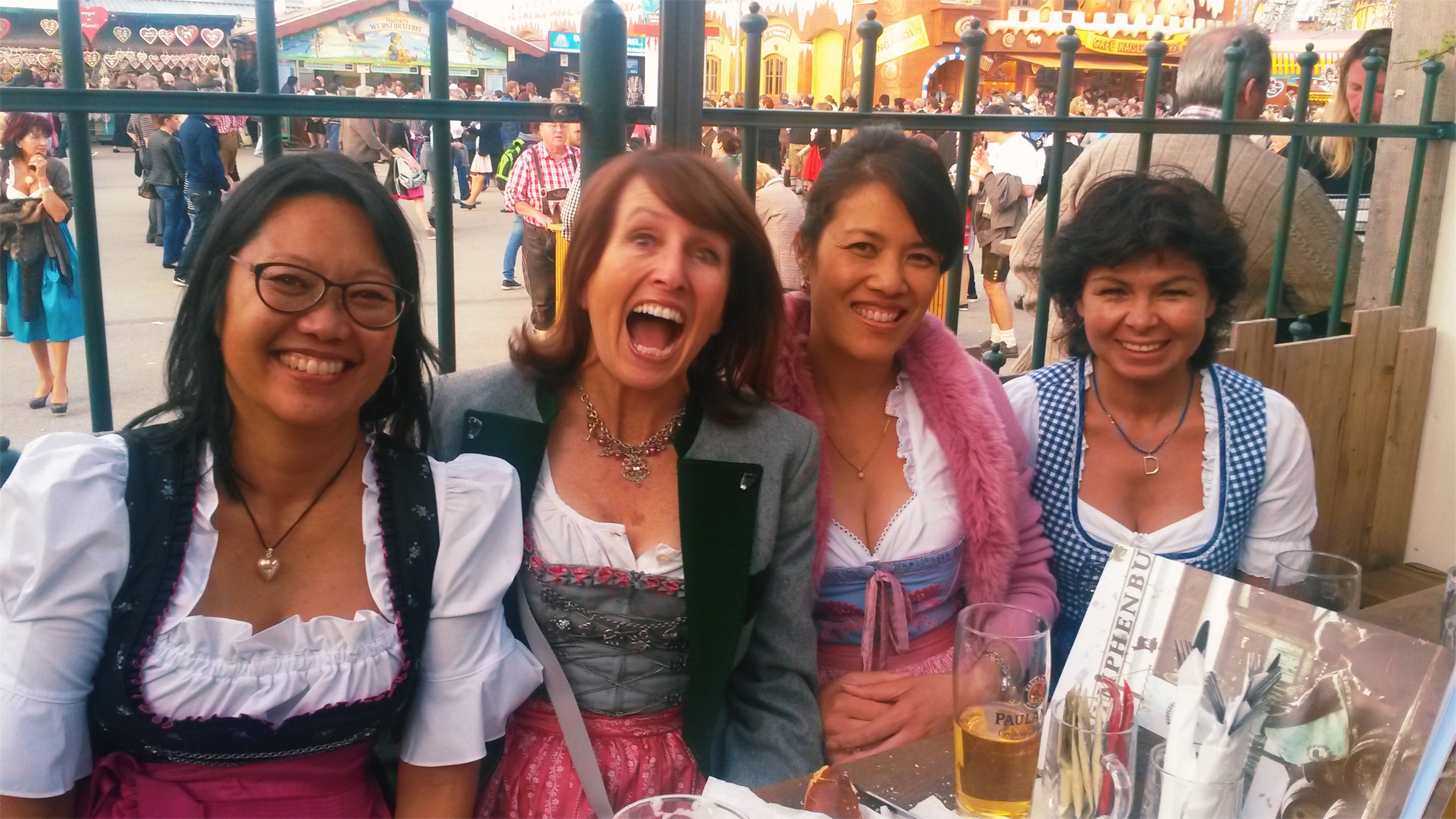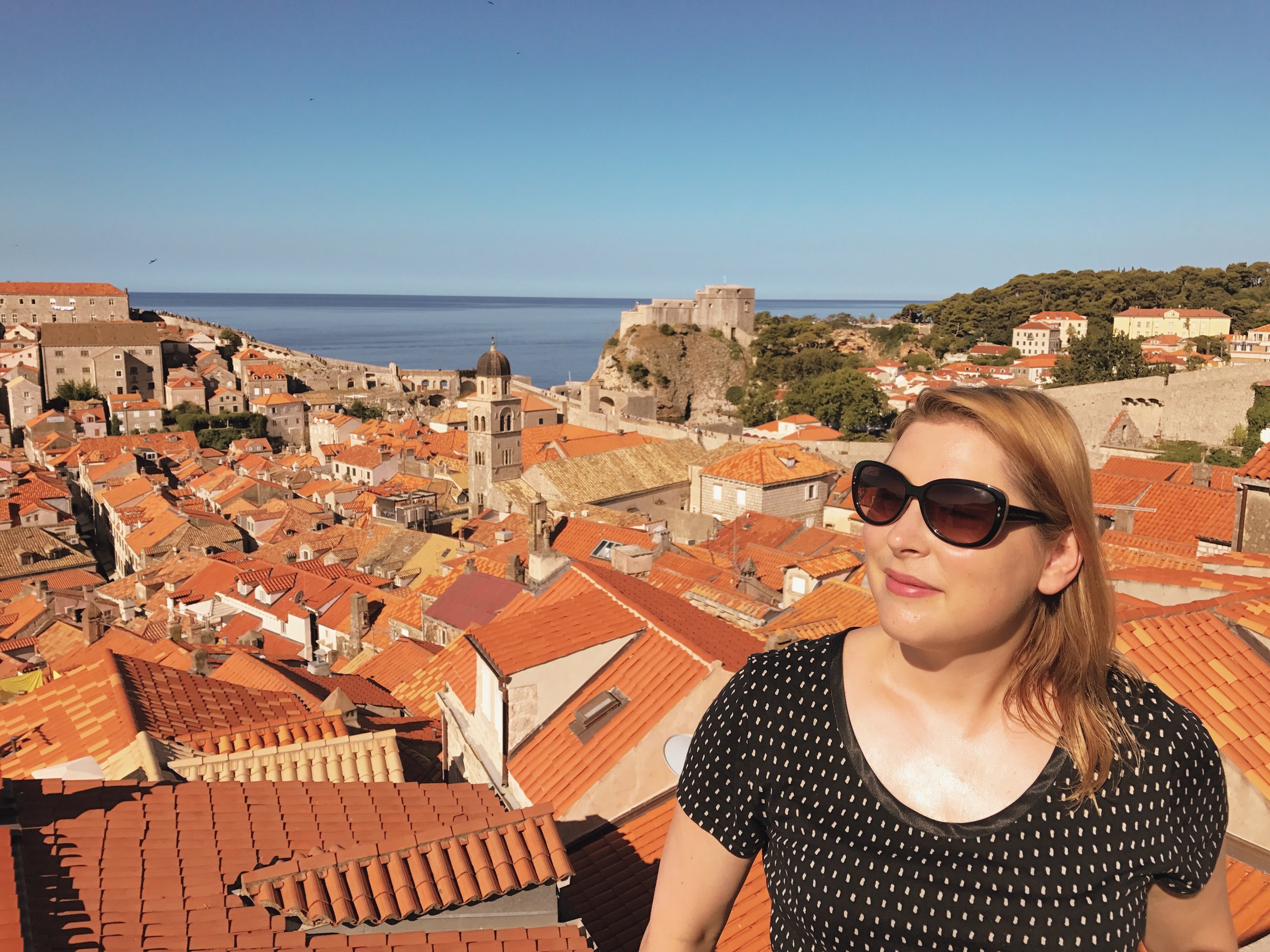Munich Must-Sees City Guide (Plus Day Trips)
You may know that Munich was the birthplace of the Nazi movement and that 80-90% of the city was bombed in World War II. But did you know that in the decades since, Munich has rebuilt itself into one of the world’s most livable cities? On the Postcard Academy podcast, Munich resident and tour guide Maxine Ryder shares her best insider travel tips on what to do in the old town and outside the city (you heard Maxine on the Oktoberfest episode).
Subscribe to the Postcard Academy for free to hear the whole story. (iPhone users=Apple Podcasts; Android users=Google Podcasts). Here are the highlights.
Where is Munich?
“On a clear day if you go up one of the towers, you can actually see the Alps from Munich.” Maxine says. “It’s close to the Austrian, Czech, and Swiss borders, so it’s the southernmost most state in Germany. It’s a great location because it has railway lines running to all major cities of Europe. It’s easy to get to Austria, Italy, Switzerland, Prague, Budapest, Paris. So, a wonderful location.”
No buildings in Munich can be taller that the green domes of Frauenkirche (Cathedral of Our Dear Lady).
Another must-see in the city center: the Rathaus-Glockenspiel at the New Town Hall in Marienplatz, the city’s central square. See the figurines dance at 11 a.m. and 5 p.m., and also at noon during summer.
What to do in Munich
There’s more to Munich than Oktoberfest and Nazi history. Here are some ideas of what to do.
Stroll the English Garden. You’ll forget you’re in the city as you walk through the greenery here. Or maybe you’ll think you’re at the beach — surfers ride artificial waves here. You can also rent a bike and ride around here. Or just sit on your bum and eat an ice cream.
Check out masterpieces. Maxine recommends the Pinakothek museum, which has one of the best collections of old masters in the world. “The Alte Pinakothek has Albrecht Durer's self-portrait. That’s a must-see. I think that painting would be, for me, like going to the Louvre and seeing the Mona Lisa.” Go on a Sunday when all the state galleries (Alte Pinakothek, Neue Pinakothek, Pinakothek der Moderne), which are next to one another, only cost €1.
Roam royal halls. “The city palace is also a must see: the Residenz Palace, which is the former residence of the Wittelsbach monarchy,” Maxine says. “There’s 130 rooms, so you do need a lot of time.”
Drink in a beer garden. Hofbräuhaus might be the most famous place to drink in Munich, but if you want a more local flavor, head to a little square called Wiener Platz.
“It's a small square, it has a little farmers market there, and a little stand selling food, and their little café. There’s a beer garden that's owned by Hofbräu called the Hofbräukeller beer garden, and it’s the less touristy one because it’s on the other side of the river on the east side.” Bonus: Here, you’ll find scenes from Willy Wonka and the Chocolate Factory.
Hofbräuhaus. Hitler built his following in this beer hall, which dates back to the 1500s. This place is now a Nazi-free cultural institution, mostly for tourists these days.
“The wonderful thing about the food market, the Viktualienmarkt, is that you can go around the market and pick your own food and sit in the beer garden and have a beer with it,” Maxine says.
What to eat in Munich
“A typical thing to have in Munich, if you're a meat eater, would be the pork knuckle,” Maxine says. “It’s called a schweinshaxe, and it comes with dumpling and sauerkraut.” The typical Bavarian breakfast is früschoppen, veal sausage with herbs and parsley and lemon. “It’s simmered in hot water and it’s served with sweet mustard and a pretzel, or bretzel as it’s called in Bavarian. And normally you have that between 7 and 11 in the morning before the midday church bells ring. And traditionally you would have it with a wheat beer, a heffeweisen beer.”
Vegetarians, if you’re in town at the right time in spring, get something made with spargel, which is white asparagus. Spargel soup is usually delicious.
There’s also kaiser spaetzle, “which is like macaroni cheese with bits of caramelized onions on top. That's very tasty, very heavy, very filling.”
Das Maria, a Virgin Mary-themed hipsterish restaurant. Good wine. Great veggie mezze plate. Ethereal instrumental covers of The Doors, which were dreamy or nightmarish, I couldn't decide. Cash only (🇩🇪). Menus only in German, but the waiters speak English.
Das Maria.
Where to eat in Munich
Maxine likes to stick to the Haidhausen and Glockenbach quarters. “We tend to go to either Thai, Vietnamese, or Indian restaurants.” For Vietnamese she likes Monsoon. For Afghani, she goes to Bamyan and Chopan.
“Viktualienmarkt, which is the city marketplace, is a wonderful place for all kinds of food,” Maxine says. “It's been there since 1807, actually, so it's very old. There’s over 200 firms selling food there, numerous stands, and a beer garden right in the center.”
Thanks to a royal decree, you can pick up your food at the market and then eat it in the beer garden.
BAKERIES
Café Schuntner. “They make the best cakes in Munich.”
Café Luitpold “has a fantastic array of cakes and that’s in Brienner Strasse. They’re a little bit more expensive, but it's a great café.
Rischart Bakery. “They're very renowned and they’re a chain, but they do good quality breads and pastries, and the other thing they do is support the arts, which I like. A certain percentage of their earnings goes to help local artists. So they get the thumbs up from me for that.”
COFFEE SHOPS
Café Dukatz. “We go every single morning. It's in the gay quarter, in the Glockenbach.”
Viktualienmarkt. “A great café has opened up in the market and they roast their own coffee.” We don’t know the name of this place, but it’s the only stand there.
LUNCH AND DINNER
Prinz Myshkin. While there’s not a lot of vegetarian options on Bavarian menus, Maxine says there are a couple of good vegetarian restaurants in the center of Munich. “One of them is Prinz Myshkin, which is probably one of the best. They do good salads.”
Viktualienmarkt. “The market is a great lunch spot, great atmosphere, lots of different choices of food. Sometimes I'll go and have a quick bite to eat at a Thai restaurant because they always have good offers (yum2take). But within the market area, there's a lovely little place called Zum Alten Markt which is a nice traditional Bavarian restaurant behind the market square.”
Rumpler. You’ll find more traditional fare at Rumpler. “It’s an Augustiner restaurant in the Glockenbach area. They have really reasonable prices and it's a bit cheaper on Sunday evening, and it’s a very traditional Bavarian place.”
Augustiner is one of the six breweries in town, and it's the oldest and most popular one with the locals because they make the best beer, according to Maxine.
Where to shop in Munich
For trendy shops, boutiques, cafés, and patisseries, Maxine heads to the Glockenbach area, which is the gay quarter of Munich.
I lusted after these hats, but thankfully for my wallet, Eisenblatter Triska was closed every time we walked by.
“I have a favorite shop,” Maxine says. “It’s a kind of funky quirky shop called Servus Heimat, and they use all the traditional iconography of Bavaria, typical clichéd images of the ducks and dog, or the pretzel, the beer, the lederhosen, but they've got a modern quirky take on it and they have a lot of interesting little gifts that you can buy in there.”
Many people like to buy traditional, ceramic beer steins, Christmas decorations, nut crackers, and cuckoo clocks. The best place to go for handcrafted souvenirs is out of town in Oberammergau, Maxine says. “Oberammergau has a lot of shops selling handmade, wooden souvenirs.”
Where to go out at night in Munich
Watch the sunset on the roof of the Barish Hof Hotel. “You have a fantastic view, right in the city center, of the cathedral and the rooftops while having a nice cocktail,” Maxine says, “and you might find yourself sitting next to someone famous.”
Continue drinking (if that’s your thing) at Schumann’s. “It’s right in the city center and it’s a bit of an institution. It's been around for ages, and Charles Schumann is a famous cocktail maker.”
I can’t remember where I am on this eve, but fyi that Peter is leaning against a wall and not trying to escape from me.
Munich might not have Berlin’s edge, but it’s still a city packed with culture and places to see live music, like Milla.
Into live music, Maxine’s boyfriend is a jazz musician who plays at the famed Unterfahrt club. “It’s great for live music. It's really probably one of the best. And I don't go there very often, but there's the Muffathalle, they have visiting musicians of all different types of music: world music, pop music, ethnic music.
When visiting Munich, a day trip to the Dachau Concentration Camp is a must. It’s worth it to go with a guide like Maxine who can explain the history.
While visiting the Dachau Concentration Camp, we strolled around town and stumbled on this cheerful little bike, which is used to transport mail.
At Nymphenburg Palace, an entire section of this now museum is filled with the fancy coaches the royals rode around in.
Here’s what a typical German apartment looks like. Every one I’ve been in has been incredibly hipster and a little bit cold… Fun fact: German apartments usually don’t come furnished. Like, you have to bring your own kitchen sink and light bulbs, so don’t forget to budget this in if you move here.
Lookingfor a Munich tour guide? Contact Maxine.
If you found this article useful, please share it, and subscribe to the Postcard Academy podcast. Each week, expats and adventurers share their insider travel tips on the best food, nightlife, and cultural experiences in the most interesting places around the globe. I’m your host, Sarah Mikutel, an American who's spent the last 7 years living in, and traveling around, Europe.
















